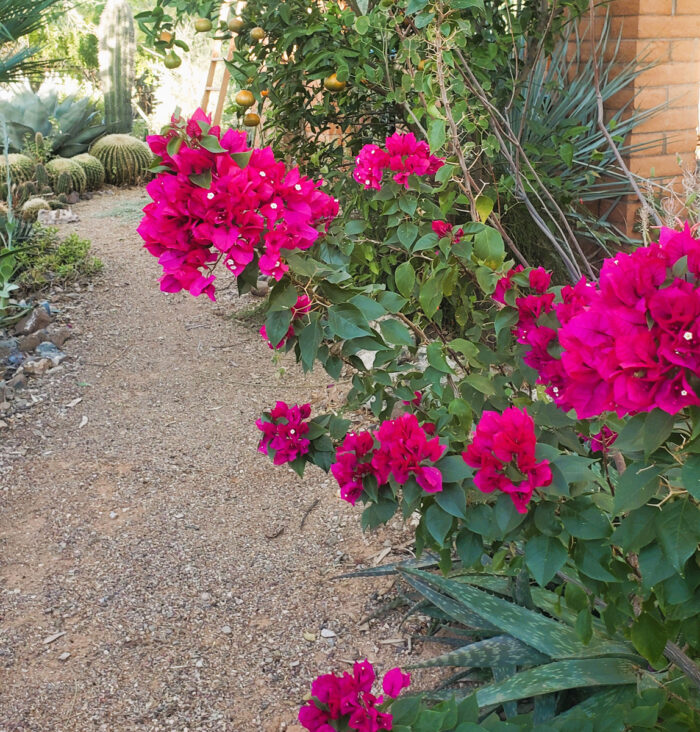
Mention bougainvillea to almost anyone, and their first images may be of sun-drenched stucco walls festooned in the neon colors of the tropics. From beachside to desert to lush tropics, their exotic vibe proclaims, “I love warm weather!” In the relatively small Nyctaginaceae family, Bougainvillea is likely the best-known member, with Mirabilis (four-o’clock) and Abronia (sand verbena) being runners up. With bougainvilleas, the color is provided by papery bracts that enclose a small white bloom that is the true flower. Flowering occurs in cycles: as a burst of new growth matures, a bloom cycle begins, repeating many times over the course of a long, hot season. Learn the basics of growing bougainvillea here.
Bougainvillea Basics at a Glance
Zones: 9–11
Light: Minimum of half day of sun (4–6 hours); full sun for best color
Soil: Well-drained
Moisture: Infrequent, deep watering
Fertilizer: Minimal unless in containers
Give bougainvilleas plenty of heat and sun
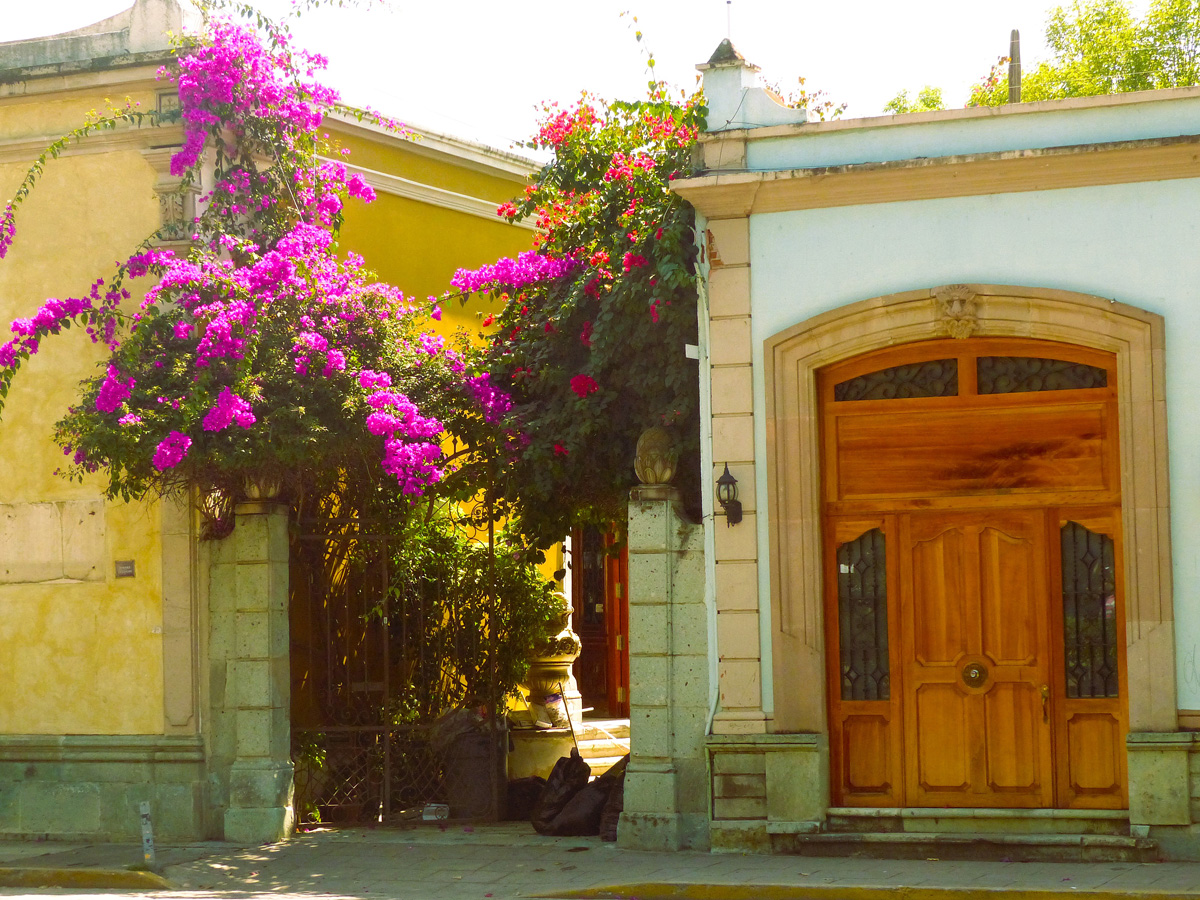
The many brilliant species and hybrids we enjoy today all trace their origins to tropical South America, notably Brazil, Argentina, and Peru. They have made their way around the tropical and subtropical world, and hundreds of selections have been made from Mexico to Thailand. The fact that they can do so well in the Southwest is no surprise. “Bougies” don’t just tolerate heat—they relish it, and even in our deserts, reflected heat from stone and concrete is taken in stride. They will easily flower with half days of sun, but full sun brings out their most brilliant hues. Once established, minimal irrigation is needed, with plants preferring an occasional deep soak and some significant drying in between. Fertilizer is seldom needed unless grown in containers.
Varieties come in all shapes and sizes
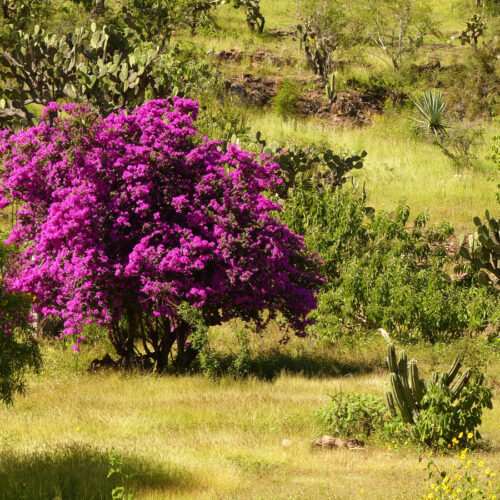 |
 |
Bougainvilleas are available in tall, vigorous forms as well as more manageable shrub types. As scrambling shrubs, they neither twine nor cling; rather, they lodge securely into the framework of adjacent plants with their stout thorns. This can make pruning a challenge, with gloves and long sleeves required. A sturdy structure or tree trunk is essential if height is desired. Shrubby forms are more user-friendly in smaller settings. Alternatively, bougies will also thrive in containers and hanging baskets. This makes them easier to move out of harm’s way into a garage or other protected setting when frost threatens. It’s important to note, however, that with limited root zones, they will always need routine watering and feeding in containers.
Watch out for cooler temps, and offer protection when needed
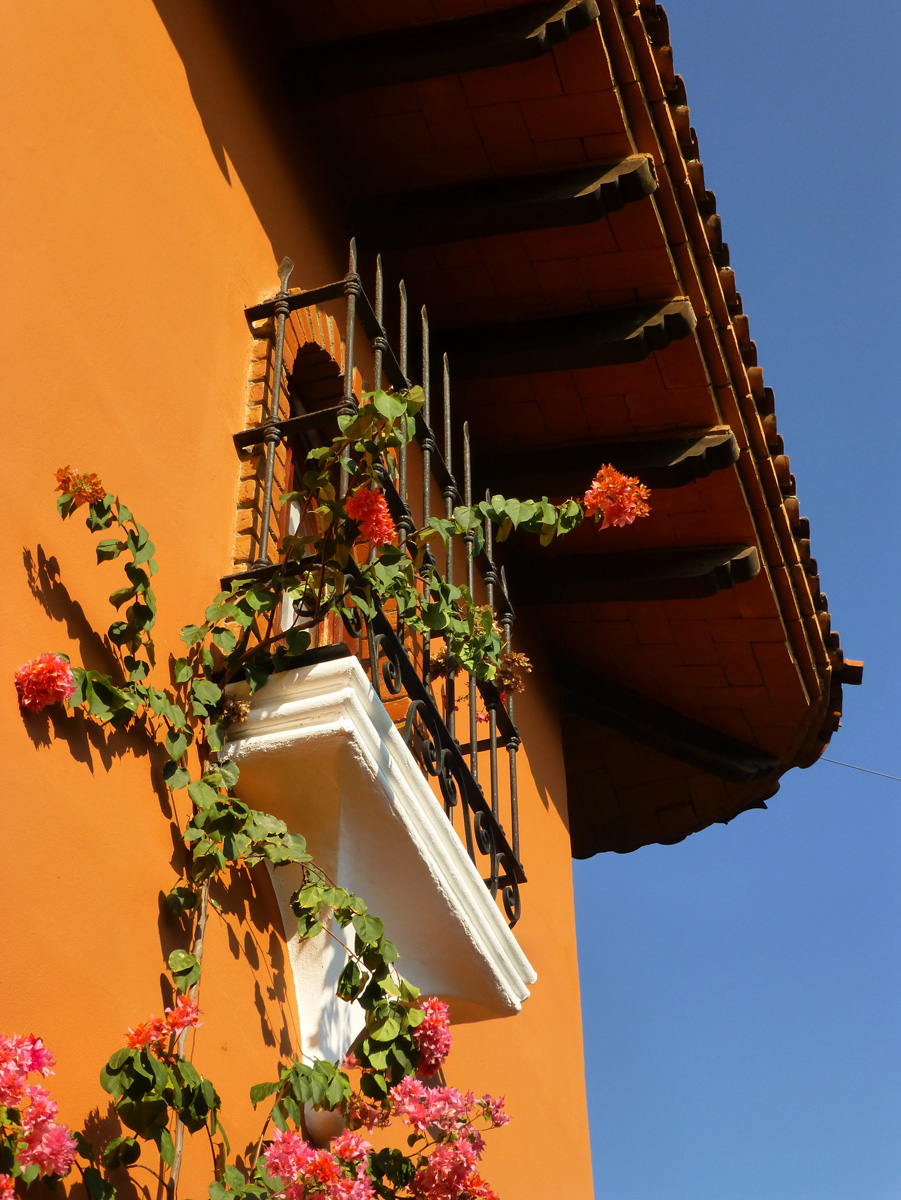
Bougainvilleas are often recommended as hardy in Zones 9–11. In the warmest areas of the Southwest (Zones 10 and above) they are fast to establish and carefree, with large-growing cultivars easily reaching the eves of a house (and higher) and freely cascading over walls and structures. Below Zone 10, where there is routine risk of occasional frost damage in winter, they will generally grow as fence-height shrubs. On cold nights below 30°F, shrubs should be well covered to the ground with fabric (sheets, blankets—never plastic!) to prevent damage. Leave the covers in place for the duration of the chilly weather to retain daytime heat.
Should a hard freeze occur, most will still be root-hardy down to about 26°F. Stems may be killed to the base, and rejuvenation pruning will be necessary in the spring. Wait until new shoots start to appear on lower stems so you know how far to trim. Even then, watch for late frosts that can damage these tender shoots.
The Best Bougainvillea Varieties
The cultivar choices for this group of plants are plentiful, in nearly every color except true blue. Here are a few of my favorites:
Discuss this and any other gardening topic in our Southwest gardening forum.
For more plants that thrive in hot weather:
Plants for Dry and Hot Areas of the Garden
Find more information on Southwest gardening here.
Dan Johnson lives and gardens in Denver, Colorado, and in Tucson, Arizona. He is an associate director of horticulture for the Denver Botanic Gardens.
Photos: Dan Johnson
Fine Gardening Recommended Products
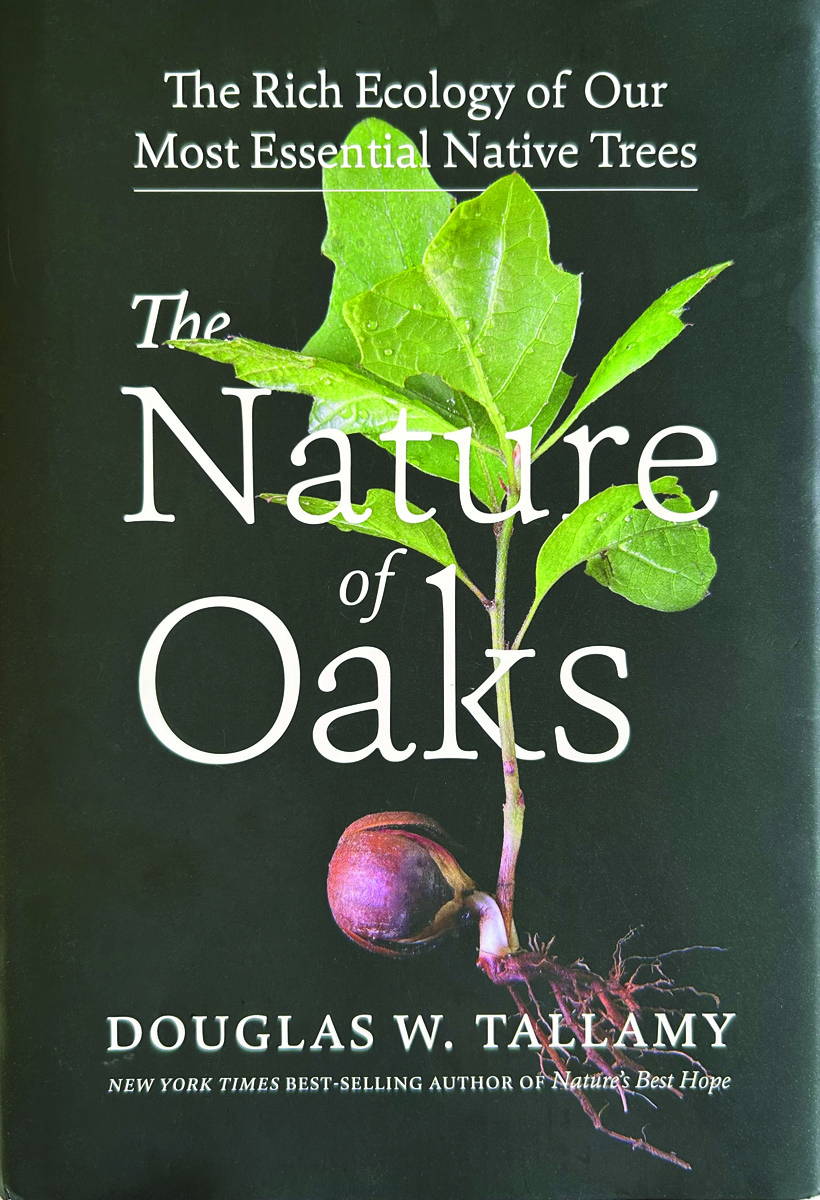
The Nature of Oaks: The Rich Ecology of Our Most Essential Native Trees
Fine Gardening receives a commission for items purchased through links on this site, including Amazon Associates and other affiliate advertising programs.
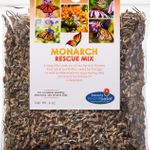
Monarch Butterfly Rescue Wildflower Seeds 4 oz.
Fine Gardening receives a commission for items purchased through links on this site, including Amazon Associates and other affiliate advertising programs.

The New Organic Grower, 3rd Edition: A Master's Manual of Tools and Techniques for the Home and Market Gardener, 30th Anniversary Edition
Fine Gardening receives a commission for items purchased through links on this site, including Amazon Associates and other affiliate advertising programs.


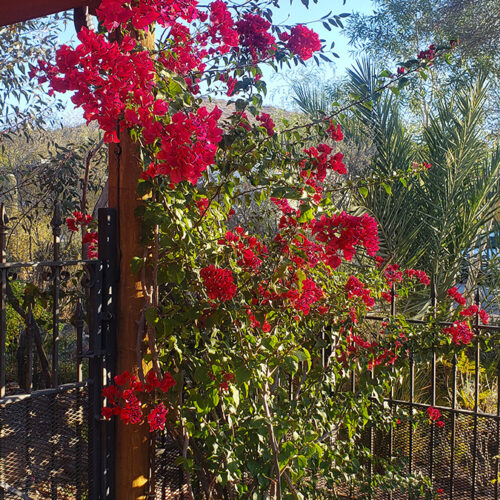
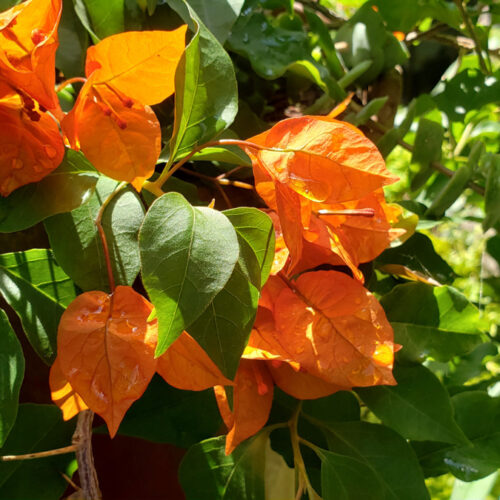
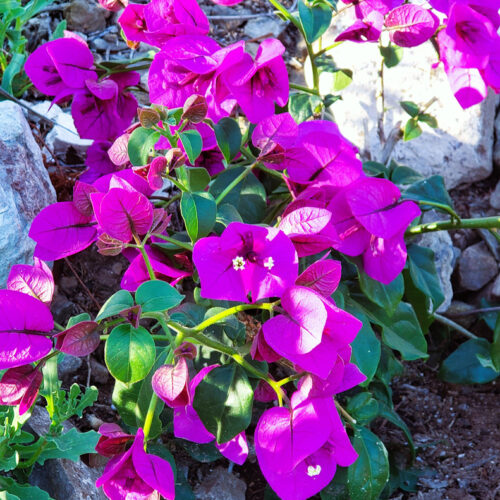
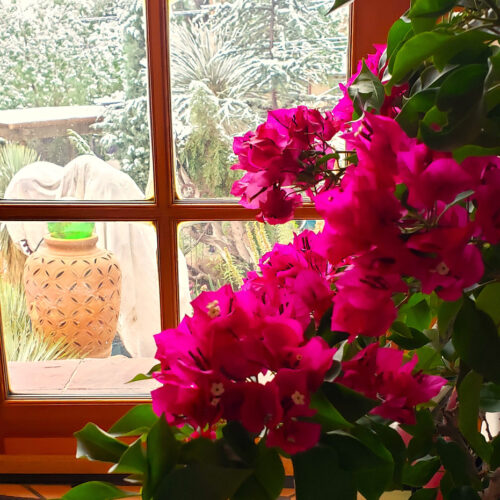
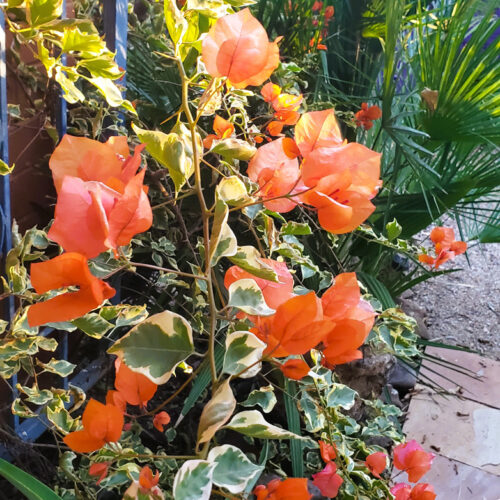
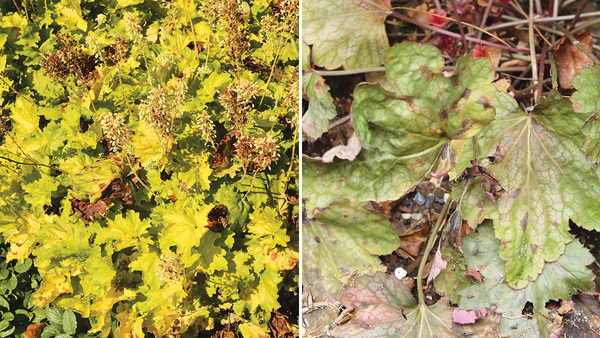
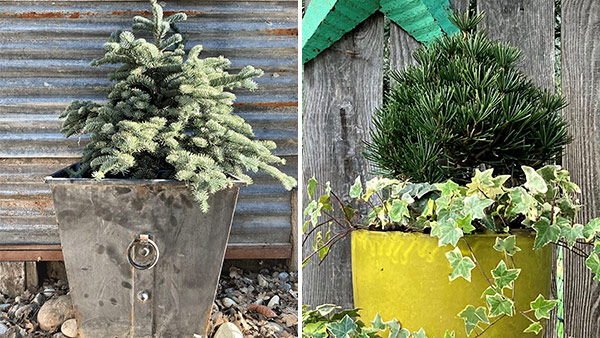
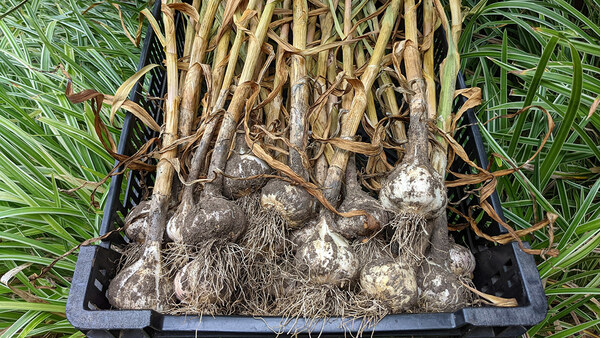

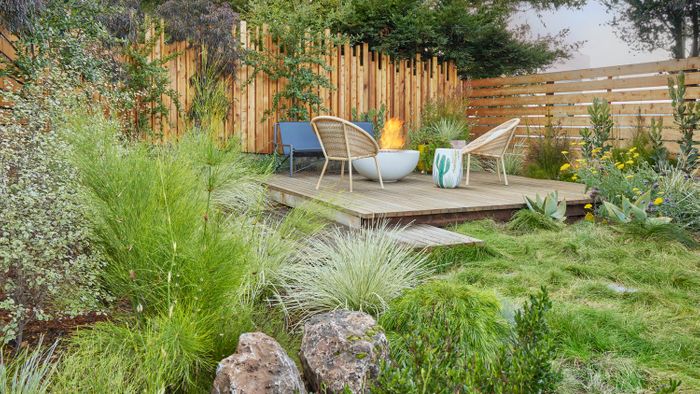

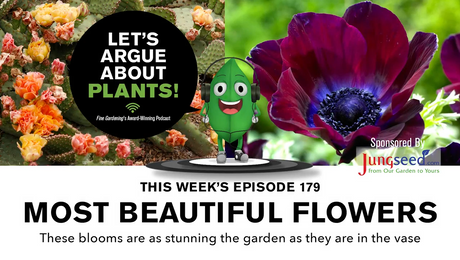










Comments
Log in or create an account to post a comment.
Sign up Log in